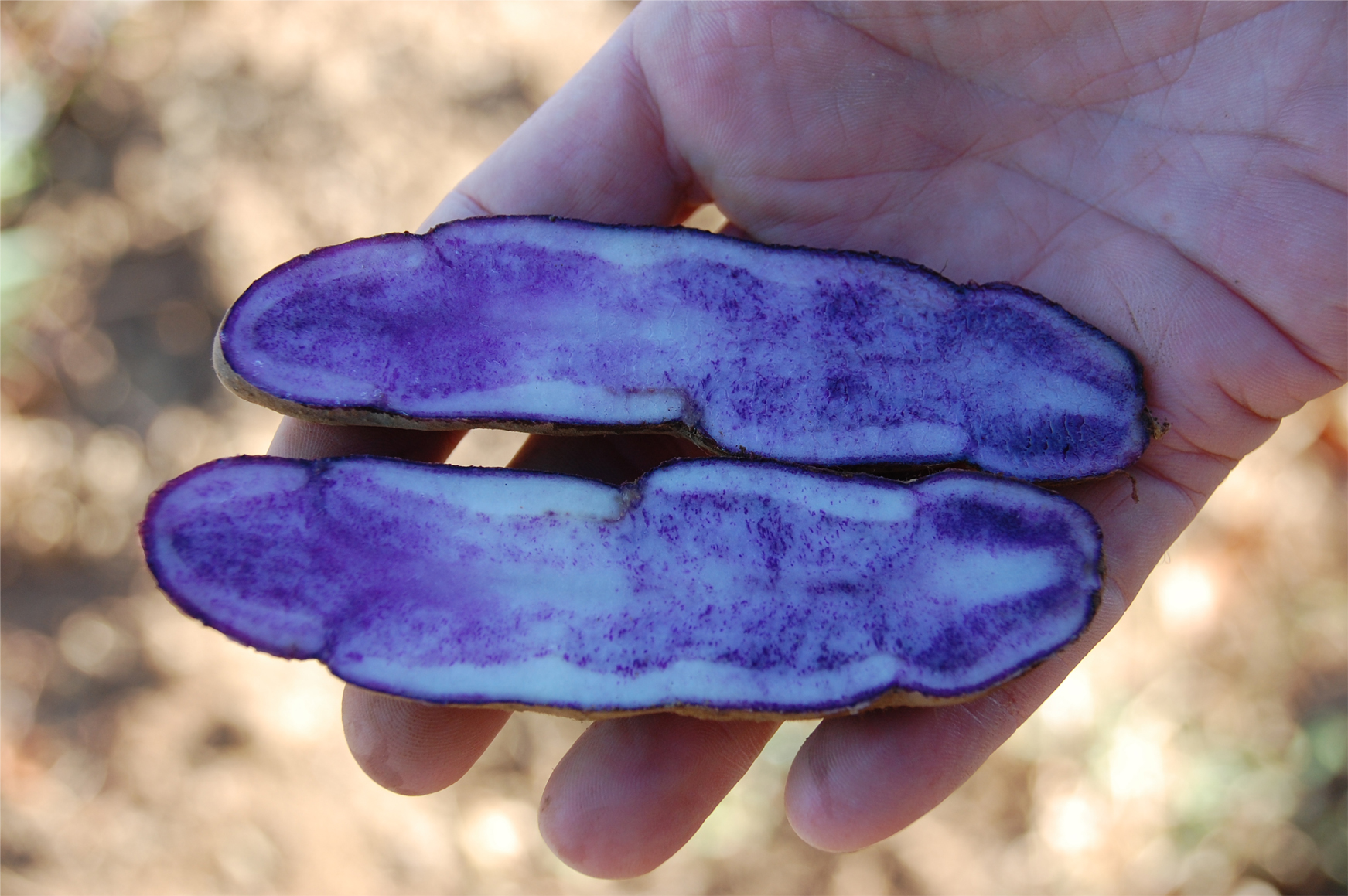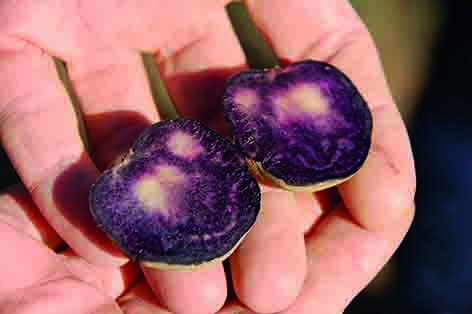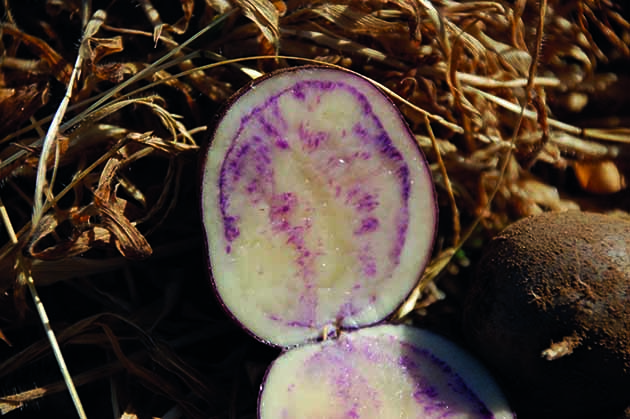Colorful potatoes - Chilean-German project meeting at the Fraunhofer IME
On August 1st and 2nd, scientists of the Chilean- German project "MoMaPo" met at the Fraunhofer IME in Aachen.
Potato (Solanum tuberosum L.) is the fourth most important staple food crop after corn, rice and wheat, and people eat up to 120 kg per person per year, depending on their eating habits. Anthocyanins occur in high quantities in many fruits and vegetables and are often responsible for their red, purple or blue coloring. In plants, they have important functions in the development and adaptations to the environmental conditions. There is accumulating evidence that anthocyanins have health-promoting benefits, such as antioxidant, anti-inflammatory or even anti-carcinogenic properties. Most of the crops used as staple crops, are relatively poor in anthocyanins, so breeding potatoes with high levels of anthocyanin can be an important supplement to the human diet.
The aim of the binational cooperation project "MoMaPo" is the identification of molecular markers for an increased anthocyanin content in potato tubers. Molecular markers are a tool of modern breeding. With their help, the breeders can succeed in developing new varieties in a shorter time compared to classical breeding. The team combines the expertise of scientists from three institutions: the Universidad Austral de Chile based in Valdivia in the south of Chile, the Fraunhofer Chile Research - Center for Systems Biotechnology in Santiago de Chile and the Fraunhofer IME in Münster and Aachen.
The researchers have access Potato genebank of the Universidad Austral de Chile, which represents the exceptionally high biodiversity of Chilean potatoes. The genebank comprises about 500 landraces and varieties. A major part are the potatoes collected in the area of Chiloe Island, which are characterized by a particularly high diversity in the characteristic colored tubers. 290 of these plants were analyzed in the joint project with regard to potential molecular markers for an increased anthocyanin content and subsequently bioinformatically analyzed for association with the anthocyanin content determined. In the project meeting, the researchers discussed the latest results and presented them to the interested audience at the Fraunhofer IME on the following day.
The project is funded in Germany by the Federal Ministry of Education and Research (BMBF) and in Chile by the National Council for Scientific Research and Technology (CONICYT).
As part of the project, young scientists also had the opportunity to do the experimental part of their final theses. Thus, during a two-month stay of a Chilean master student of the Universidad Austral de Chile at the Fraunhofer IME in Aachen, experimental data were generated which, after careful evaluation, provide the basis for a master's thesis and a joint scientific publication.
 Fraunhofer Institute for Molecular Biology and Applied Ecology IME
Fraunhofer Institute for Molecular Biology and Applied Ecology IME

